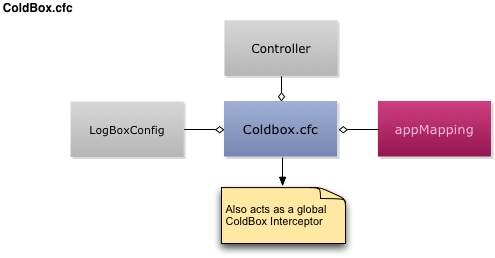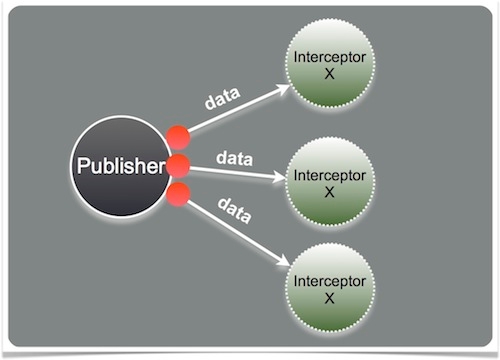ColdBox.cfc
The ColdBox.cfc is the main applications' configuration object.
The ColdBox configuration CFC is the heart of your ColdBox application. It contains the initialization variables for your application and extra information used by third-party modules and ultimately how your application boots up. In itself, it is also an event listener or ColdBox Interceptor, so it can listen to life-cycle events of your application.

This CFC is instantiated by ColdBox and decorated at runtime so you can take advantage of some dependencies. Here is a table of the automatic injection this object has:
Property
Description
appMapping
The ColdBox app mapping
coldboxVersion
The version of the framework
controller
The ColdBox running app controller
logBoxConfig
A reference to a LogBox configuration object
getJavaSystem()
Function to get access to the java system
getSystemSetting()
Retrieve a Java System property or env value by name. It looks at properties first then environment variables
getSystemProperty()
Retrieve a Java System property value by key
getEnv()
Retrieve a Java System environment value by name
webMapping
The application's web mapping
Configuration Storage
Once the application starts up, a reference to the instantiated configuration CFC will be stored in the configuration settings inside the ColdBox Main Controller (application.cbController) with the key coldboxConfig. You can then retrieve it later in your handlers, interceptors, modules, etc if you need to.
// retrieve it
config = getSetting( 'coldboxConfig' );
// inject it
property name="config" inject="coldbox:setting:coldboxConfig";Configuration Interceptor

Another cool concept for the Configuration CFC is that it is also registered as a ColdBox Interceptor once the application starts up automatically for you. You can create functions that will listen to application events by simply registering them by name:
function preProcess( event, interceptData, buffer, rc, prc ){
writeDump( 'I just hijacked your app!' );abort;
}Note that the config CFC does not have the same variables mixed into it that a "normal" interceptor has. You can still access everything you need, but will need to get it from the controller in the variables scope.
function preRender( event, interceptData, buffer, rc, prc ){
controller.getWirebox().getInstance( 'loggerService' ).doSomething();
}Was this helpful?